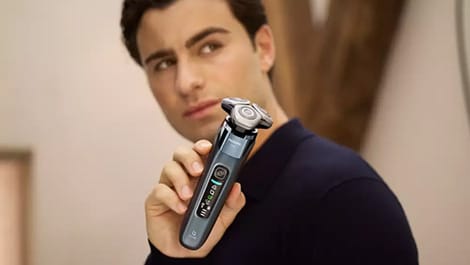
Tips to prevent skin irritation on face

Ingrowns down there can be the bane of your existence...especially when those pesky, itchy bumps keep coming back. If you frequently experience ingrown hair in the pubic area, it can feel like it’ll never go away! But don’t worry! In this guide, we’ll help you understand what ingrown hairs are, what causes them, and how to prevent ingrown hairs from coming back.
Ingrown pubic hairs occur when your pubic hair grows into the skin rather than naturally growing out to the surface. This can follow with:
Ingrowns down there can form due to several reasons. Some of the most common causes of ingrown hairs include: Ingrown hairs are common and generally pose no cause for concern. However, if you notice that your ingrown hair becomes cystic or infected, seek medical advice. A healthcare professional can confirm if there is a bigger problem.
If you’re ever wondering, ‘how to shave without getting ingrown hairs’, here are some tips for treating ingrowns down there without irritating the skin:
Now that you know how to shave without getting ingrown hairs, let’s look at the essential steps you can take to prevent ingrowns after shaving. Here is what you need to do: Ingrown pubic hair can be frustrating, but it is also a common issue. By following these preventative tips, you are one step closer to smooth, ingrown-free skin. Looking to elevate your exfoliation routine? Check out our guide to exfoliation. Sources:
If you want to learn how to shave without getting ingrown hairs, preparation is a key step you must take. Before picking up that shaver, follow these steps to prevent ingrowns after shaving:
• Cleanse the area by using a fragrance-free soap and warm water. This removes any oil or dirt, which can also help prevent bumps after shaving.
• Overall, it is best to leave shaving to the end of your shower routine to maximise hydration, and so the warm water softens your skin.
• Use a sharp and skin-friendly electric shaver, like the Philips OneBlade Intimate.
If you want to shave your pubic area, lather the area with a sensitive shaving cream or gel. Then pull the skin taut and shave in the direction of hair growth. Avoid shaving over existing ingrown hairs, as this could further damage the skin.
For a fresh, hygienic and comfortable shave, the Philips OneBlade Intimate is the most skin-friendly tool for protecting your most sensitive areas while you shave. With its SkinProtect Blade, the OneBlade Intimate easily glides across your skin, protecting it from irritation.
After shaving, rinse the area with lukewarm water and pat dry with a towel. To moisturise the skin, apply a lightweight, unscented moisturiser or after-shave product.
Avoid wearing tight clothing such as underwear or leggings and instead wear more loose-fitting, breathable clothing.
If you find that you are still getting ingrowns down there after shaving, it may be worth trying out different hair removal methods such as hair removal creams, IPL, or laser hair removal. Shaving is not for everyone, and you may find that an alternative hair removal method is less irritating to your skin.
OneBlade
Intimate
QP1924/30
OneBlade
2 x SkinProtect Blade
QP229/50